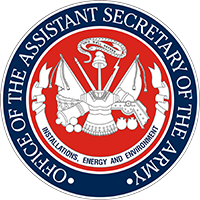Environment, Safety & Occupational Health
The office of the Deputy Assistant Secretary of the Army for Environment, Safety and Occupational Health (DASA-ESOH) provides policy, programming and oversight of the Army’s ESOH programs; provides recommendations to milestone decision authorities on Army materiel regarding ESOH concerns; executes the Army’s arms control program; and serves as the Executive Agent for several DoD programs.
Army Environment, Safety, & Occupational Health Strategy 2025
The Office of the Deputy Assistant Secretary of the Army for Environment, Safety, and Occupational Health has published a holistic Army-wide strategy that incorporates environmental, safety, and occupational health strategy, policies and programs into one comprehensive document: the Army Environment, Safety, & Occupational Health Strategy 2025 (Army ESOH Strategy 2025).
Army Environment, Safety, & Occupational Health Strategy 2025 https://www.army.mil/e2/c/downloads/472081.pdf
Safety, Occupational and Environmental Health (SO&EH) Strategy 2020-2028
Munitions & Chemical Matters
Provides policy, oversight, and technical direction for implementation of the Army’s Explosives Safety Management Program, Military Munitions Response Program, and all other Army business lines in which conventional or chemical munitions have the potential to negatively impact the environment, safety, or occupational health. Scope includes actions to address unexploded ordnance, discarded military munitions, and munitions constituents, including environmental response actions (i.e., munitions responses), operational range clearance activities, explosives and munitions emergencies, safe and environmentally compliant disposal of waste military munitions, and the Army's 3Rs (Recognize, Retreat, Report) Explosives Safety Education Program across the Army inventory of active and closed installations. Manages the Recovered Chemical Warfare Material Program on behalf of the Office of the Secretary of the Defense.
Environmental Security Directorate
DASA ESOH formed the Environmental Security Directorate (ESD) in 2022 to enhance strategic military advantage at the interface of the Army’s mission and the physical environment. ESD provides the foresight, strategy, policy, and oversight necessary to anticipate and address the threats of compounding environmental and socioeconomic issues. ESD coordinates internal Army and inter-Service environmental security efforts and is a liaison to external defense, intelligence, diplomatic, civil, academic, allied, and homeland security entities.
Environmental Quality
Provides policy, strategic direction, and oversight for Army Environmental Quality programs and Native American Affairs to include compliance with air, water and waste requirements, conservation of natural and cultural resources, and consultation with Federally-recognized Indian Tribes and Native Hawaiian organizations.
Safety
Safety assists the DASA-ESOH in setting the strategic direction, goals and objectives for Army Safety; establishes policy and sets standards; proposes programming and funding; and provides program management and oversight. The desired outcome is to ensure the Army, its soldiers, civilian employees, and their family members are educated, and encouraged to employ composite risk management in their on-duty and off-duty activities, to foster a safe and healthy work and living environment.
Occupational & Environmental Health
Provides policy, strategic direction and oversight for Army Occupational and Environmental Health (OEH) programs to include occupational health, industrial hygiene, hearing health, and environmental health.
Technology
Oversees programs and provides policy guidance on environmental quality technology, environmental information technology management, and environmental quality considerations in materiel acquisition programs. Additionally provides guidance on arms control treaty compliance issues.
Per - and Polyfluoroalkyl Substances (PFAS)
Provides policy, strategic direction, and oversight for actions related to per- and polyfluoroalkyl substances (PFAS) with a focus on environmental restoration of PFAS releases, mitigating and eliminating the current use of aqueous film forming foam (AFFF), understanding the impacts of PFAS on human health, and expanding PFAS-related public outreach. PFAS refers to a class of substances that includes perfluorooctane sulfonate (PFOS) and perfluorooctanic acid (PFOA). PFAS are found in everyday consumer items – from nonstick cookware to water-resistant clothing. They are also found in certain AFFF. DoD and Army began using AFFF that contained PFAS in the 1970s. Historic use of AFFF is the primary mechanism for release of PFAS at Army facilities.
Regional Environmental and Energy Offices
The Army's Regional Environmental and Energy Offices protect and advance the Army and DoD military mission by engaging State governments, regional Federal agencies, non-governmental organizations and other stakeholders to identify and address issues and actions that may affect military operations.
Restoration
Provides policy, advocacy, oversight, and outreach to the Army's Environmental Restoration Program to address the release of hazardous substances; pollutants and contaminants; and military munitions resulting from past activities and to protect human health and the environment at Active and Base Realignment and Closure (BRAC) installations, Army National Guard facilities, and Formerly Used Defense Sites (FUDS) properties.
For Inquiries: Contact Us

